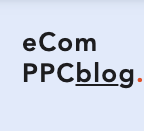Google Shopping — 3 Ways To Target Keywords (Sort Of)
Google Shopping ads are an important channel for many SME retailers. Unlike search ads, Google Shopping ads don’t allow you to actively target keywords where you’d like to serve ads. However, there are a number of tricks that can maximise your chances of serving your paid search ad when users search for important terms for your business.
More Google Shopping blogs at eComPPCblog.com
Firstly, what are Google Shopping ads?
Google Shopping ads are feed based. Advertisers upload product information via a feed (or API connector to your ecommerce platform) and serve ads in the shopping listings on Google, when users search for keywords relevant to your product information in your feed.
As Google grow their shopping tab to rival Amazon, more people will purchase and shop in this platform, making it a no-brainer for small ecommerce retailers.
How to control what keywords you serve for?
1. Keyword Negation
It’s best practice to setup Google Shopping campaigns to target products from your feed. Similar to search ads, you may have one campaign for each product type you sell e.g. t-shirts, trousers, accessories, shoes, etc.
Unlike search, Google Shopping ads have three levels of campaign priority: high, medium and low. If a product is eligible to serve an ad from all three campaigns, campaign priority will determine which campaign it serves from (irrespective of bid).
This allows advertisers to use keyword negation to control which search terms trigger ads in which campaign. Let’s say you have ‘Product A’, a mens t-shirt — and are targeting the product in all three of your campaigns, one high, one medium and one low. If someone searched for a relevant term, the ad would serve from the high priority campaign.
Now, let’s say you add your brand name as a negative to the high priority campaign.
If someone searches ‘Mens T-shirt your brand’ — the high priority campaign can’t serve an ad due to the negative keyword, and so the medium priority campaign will serve for this search term.
This principle allows you to split your shopping campaigns into, Generics (high priority setting) and Brand (medium priority setting).
2. Add Search Terms To Product Type Field
A product feed is required to run Google Shopping ads. In the feed, you list each product’s attributes including: price, condition, title, description, etc.
One field is ‘Product Type’. This can be used to inform Google of what keywords would be relevant to your product. In this field, list the keywords you’d like to give your product the best chance to serve for, using a ‘>’ to separate terms. The below would work for our t-shirt example.
mens t shirt > mens red t shirt > small mens t shirt
3. Product Title & Description
Along with your product type, product title and product description are important fields in your product feed for improving product relevance for search terms you’d like to display ads for.
Ensure you list key product features and search terms in the first 70 characters of each e.g. colour, size, brand, etc.
-
Got any tips of your own? Let us know.
